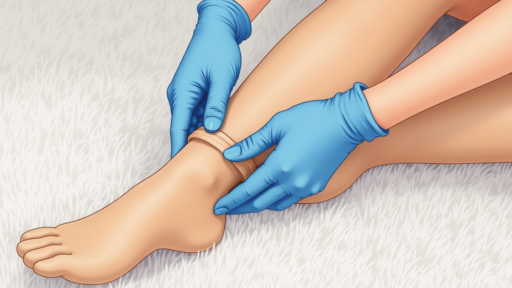If you’ve been dealing with ongoing pelvic pain that just won’t go away, you’re not alone. Many women suffer from chronic pelvic pain, and for some, the culprit is a condition called pelvic venous disease (PeVD). Luckily, a treatment called embolizationor embolotherapy might be able to help. Let’s break down what Ovarian Vein Embolization means, how it works, and why it might be the right option for you.
What is the Ovarian Vein?
The ovarian vein is a vein in the female body that carries blood from the ovaries back to the heart. Each ovary has its own ovarian vein—one on the left and one on the right. In some cases, especially after pregnancy, these veins can become enlarged or weakened, which can lead to blood pooling in the pelvis. This can contribute to conditions like Pelvic Venous Disorder (PeVD). Pelvic venous disease happens when the veins in your pelvis become swollen and don’t work properly. This can lead to a buildup of blood, which causes pressure and pain. You might also notice unusual varicose veins in areas like your buttocks or thighs, which are signs that something might be going on with your pelvic veins.
Common Symptoms of Pelvic Venous Disease
Some of the main signs you might have PVD include:
- A feeling of heaviness or fullness in your lower abdomen
- Pain that gets worse at the end of the day or after standing for long periods
- Pain after sex (also called post-coital pain)
- Varicose veins in unusual areas like the labia or upper thighs
If these symptoms sound familiar, it’s time to talk to your doctor about pelvic venous disease.
What is Embolization?
Embolizationis a minimally invasive treatment used to block off problematic veins. It’s often used to treat the swollen veins that cause pelvic venous disease. During this procedure, a doctor uses a tiny tube to inject a solution or place small coils into the veins, stopping blood from pooling there. It’s kind of like putting a cork in a bottle of wine.
Here’s what you can expect during the procedure:
- The doctor makes a small incision, usually in the groin or upper arm, and guides a catheter (a thin, flexible tube) to the affected veins.
- They will inject a solution or use tiny coils or plugs to seal off the veins, preventing further blood flow into the swollen areas.
- After the procedure, the pressure in your veins goes down, which can help reduce pain and other symptoms.
Most people feel better relatively quickly after the procedure, and it usually doesn’t require much recovery time.
Who Should Consider Ovarian Vein Embolization?
Embolization is often recommended for women who:
- Have chronic pelvic pain for at least six months.
- Have symptoms related to PeVD that don’t improve with medication or lifestyle changes.
- Are looking for a minimally invasive solution with relatively quick recovery time.
What to Expect After Ovarian Vein Embolization
While every patient is different, many women report a reduction in pelvic pain within weeks of the procedure. Some even notice improvements almost immediately. However, it’s important to keep in mind that PeVD is a complex condition, and some patients may need additional treatments, such as stenting, depending on their symptoms.
Final Thoughts
Chronic pelvic pain can be frustrating, but treatments like ovarian vein embolization offer real hope for relief. If you’re dealing with symptoms of pelvic venous disease, talk to your doctor about whether this procedure is right for you. By addressing the root of the problem—those swollen, malfunctioning veins—you can take a big step towards feeling better and getting back to your normal life.




